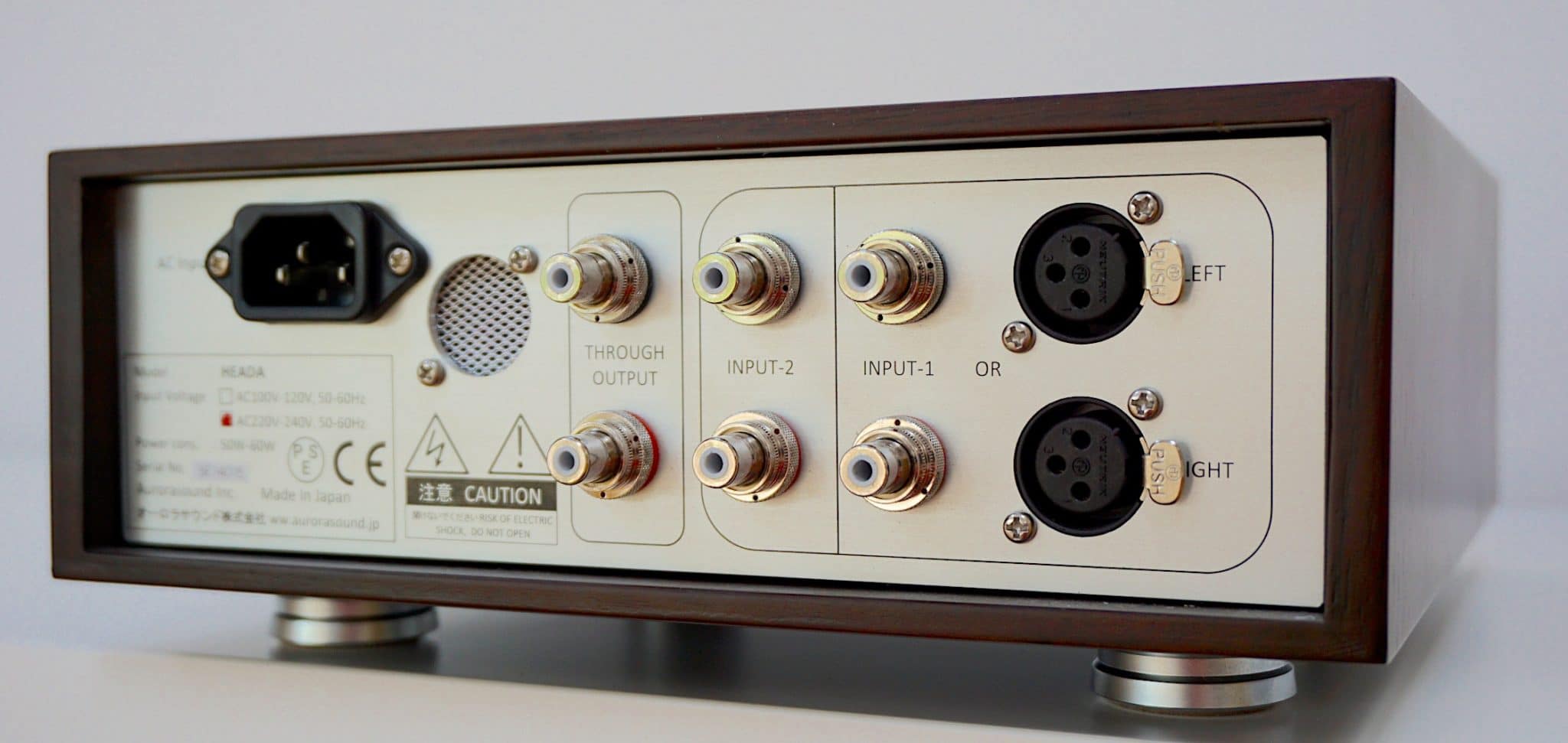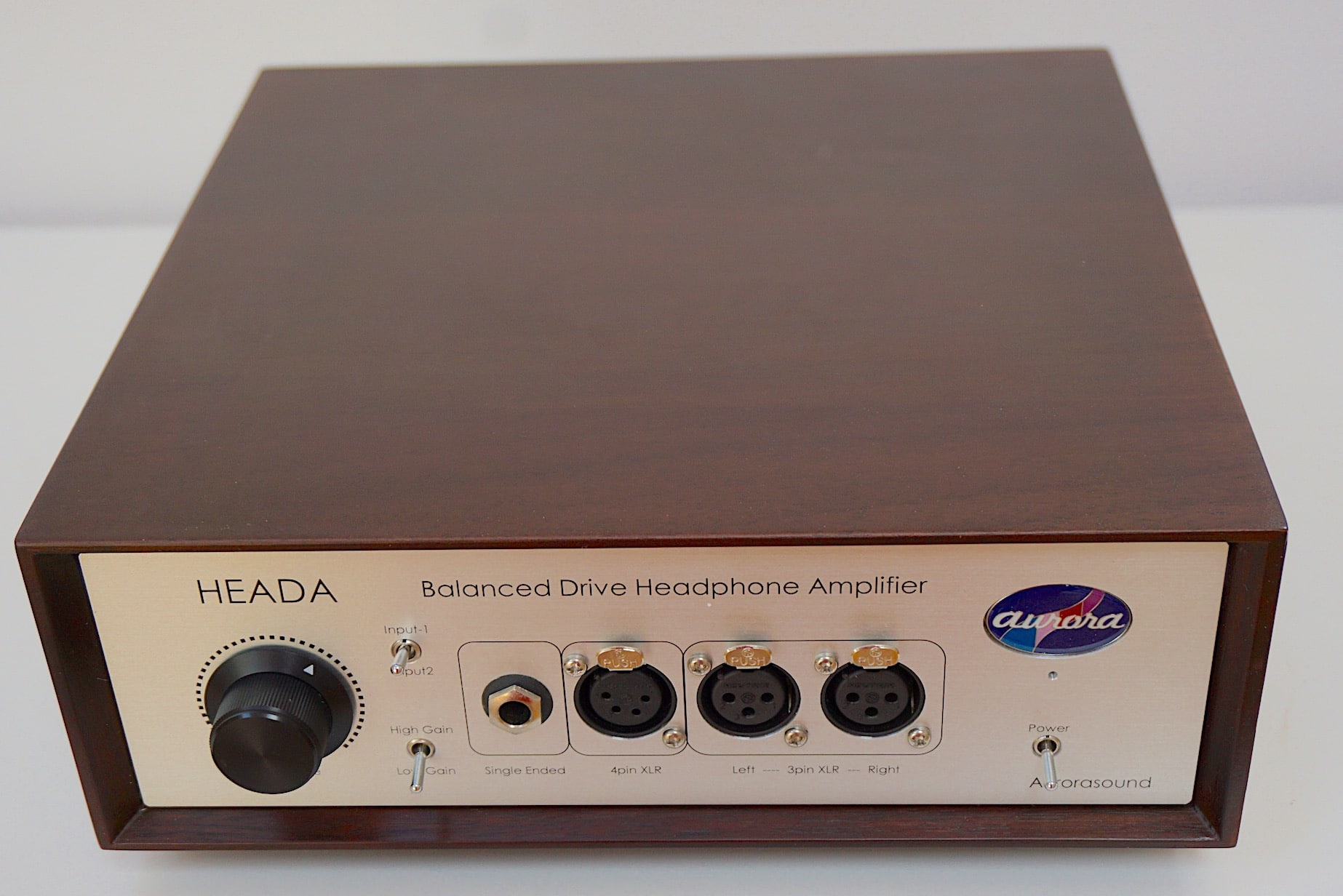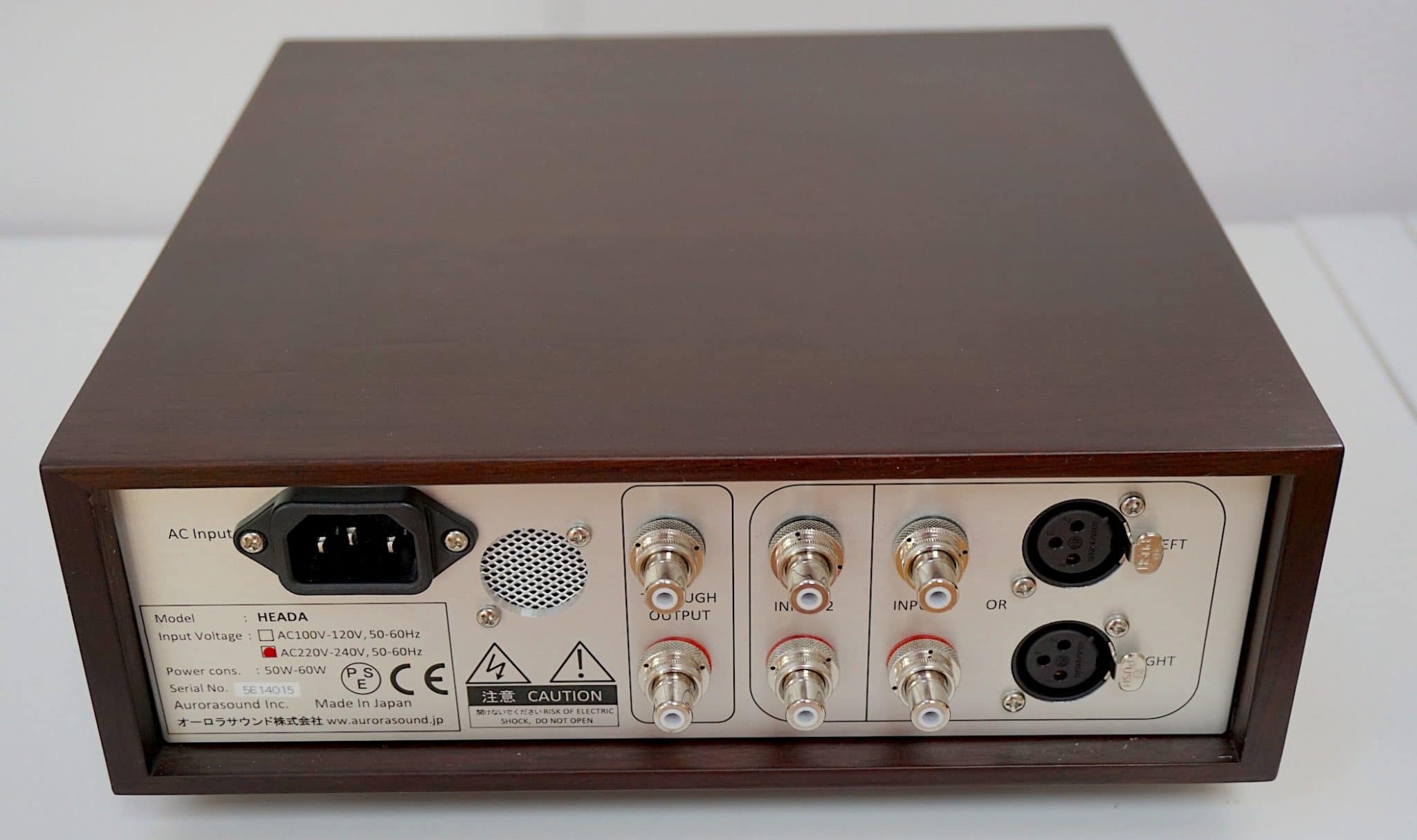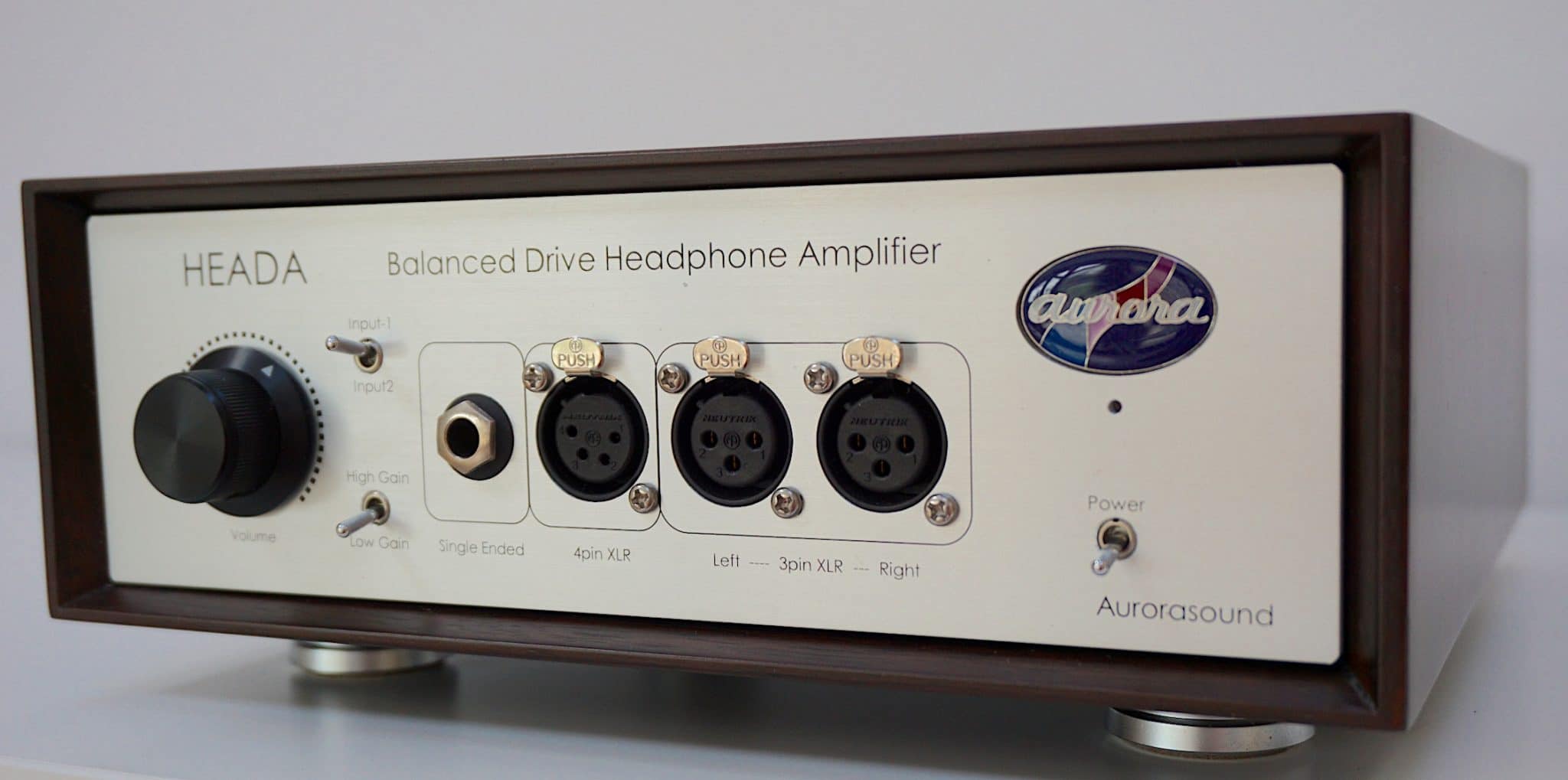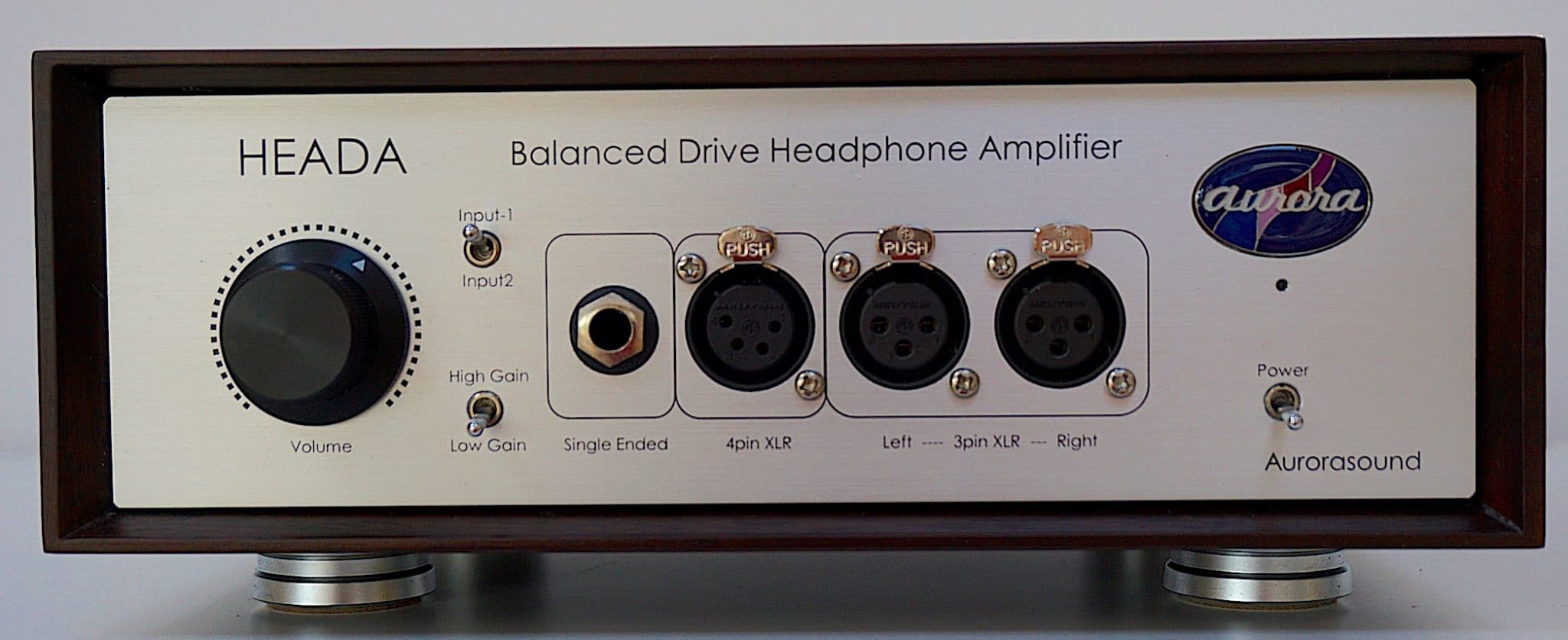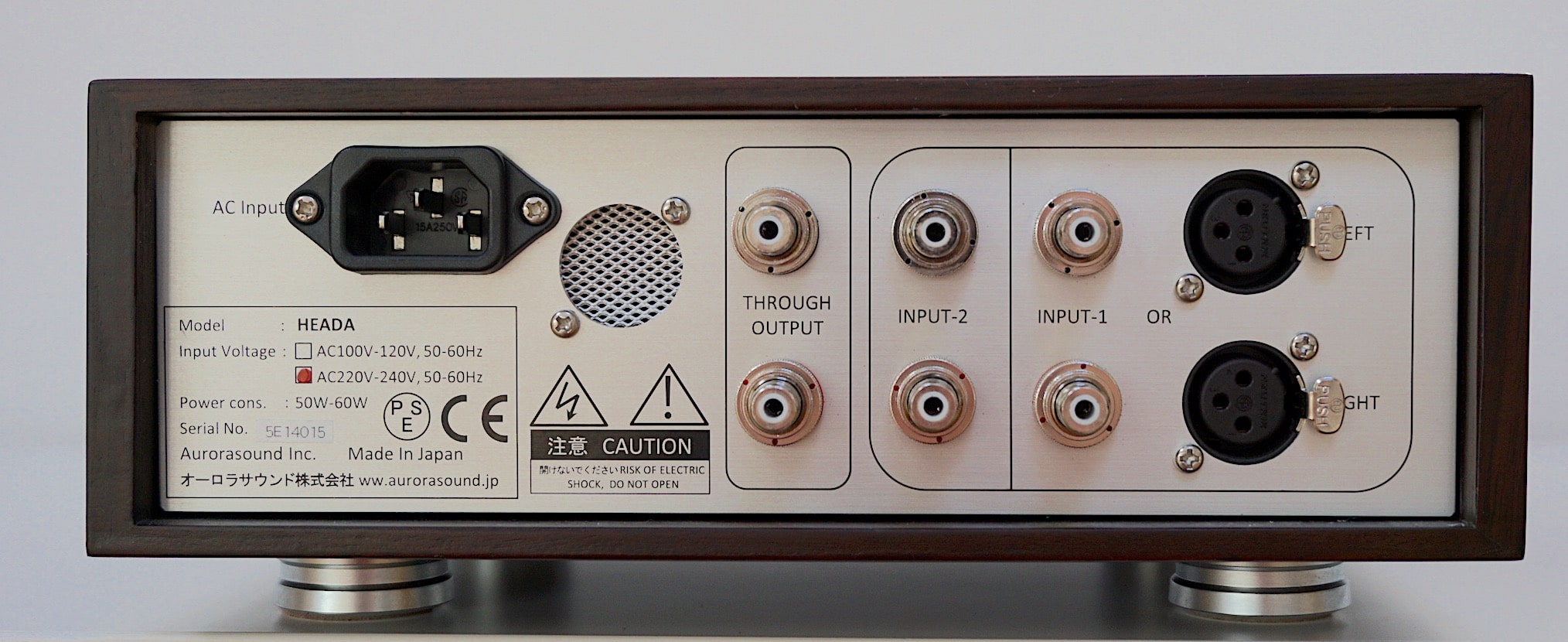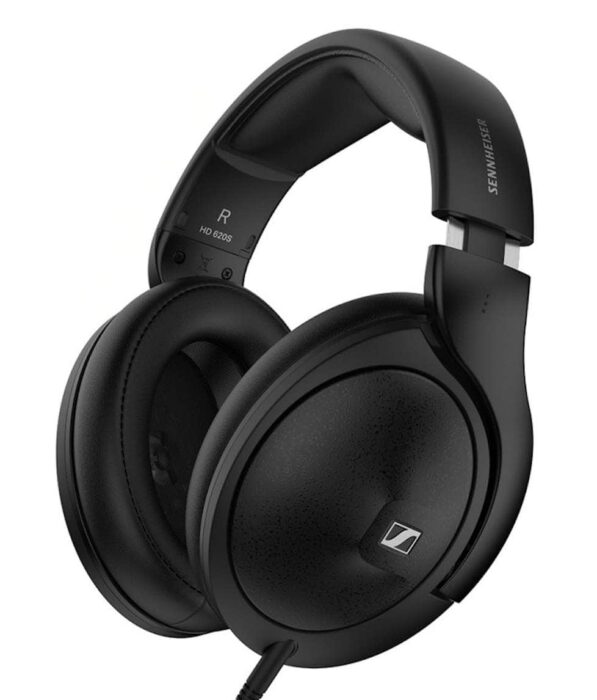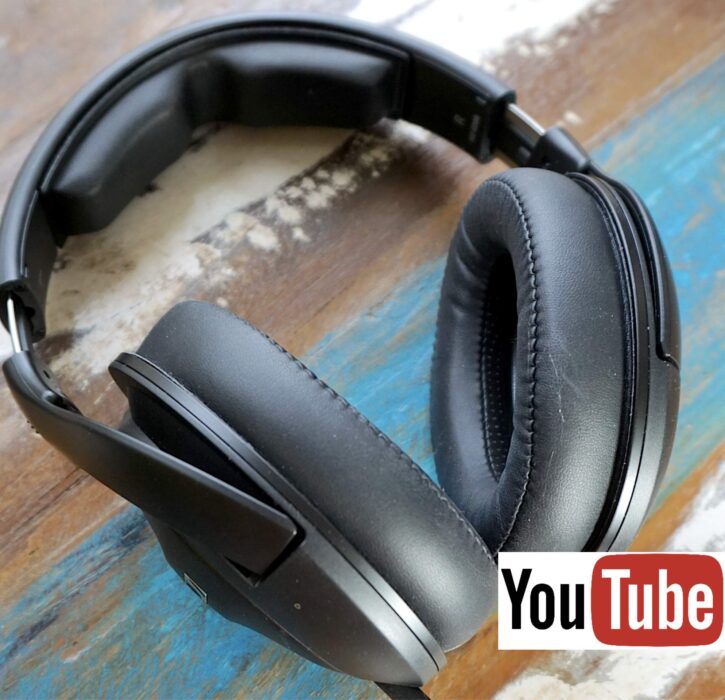The Article
Heada headphone amplifier from Aurorasound
21st June 2019
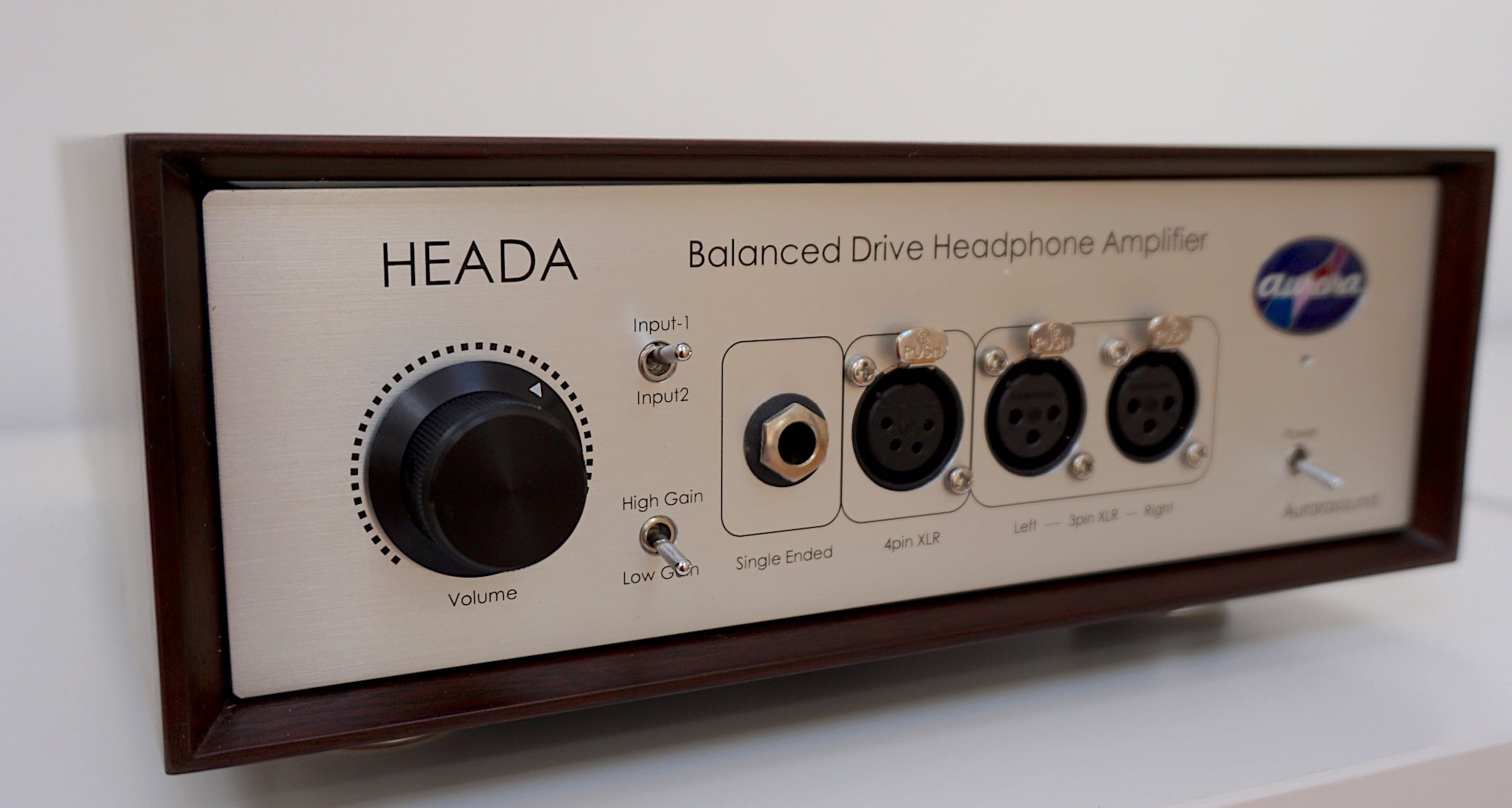
Out of Yokohama, Japan and designed by ex-Texas Instruments man, Shinobu Karaki, Paul Rigby reviews this distinctive, balanced headphone amp
The Heada looks interesting, doesn’t it? The contrast is the outer, wooden casing and the inner fascia which looks like its been ripped from a science lab.
But there’s a purity about it that I like. A simplicity. And I’m all for simplicity in hi-fi design because simplicity normally means better sound quality.
In fact, this headphone amplifier is that and that only. There’s none of your secondary pre-amp features here. Oh no. You need to hook this box to a pre-amp or standard integrated. It won’t plug directly into a power amplifier. There’s nothing else in this box either. No other additional features to crowd the chassis or bleed veiling electronic noise. Purity and simplicity again.
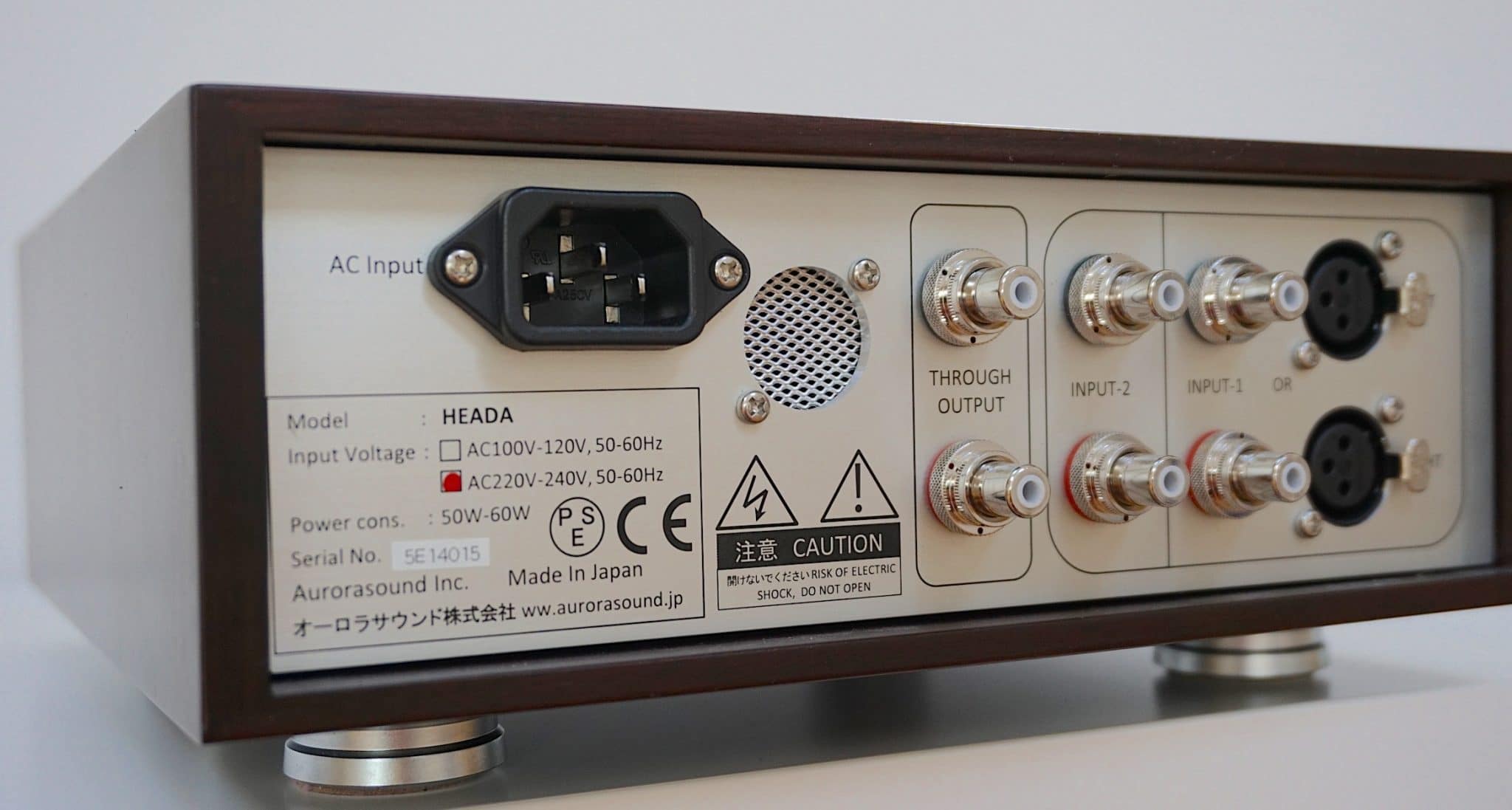
There’s also a sense of isolation – another tick in my sound quality box – because you need to physically select which set of inputs you want to access.
On the rear, you’ll see either single-ended or a single-ended/balanced pairing. Move back to the front fascia and you’ll find ye olde toggle switch to flick between the two. Also on the rear is a pair of Through Output (not controlled by the front volume control) single-ended ports plus a mains socket. This is an IEC so a cable upgrade (highly recommend, incidentally) is possible.
Nipping back to the front is a very nice volume control created by Tokyo Ko-on Denpa, low/high gain switch, full size single-ended headphone socket plus a 4-pin XLR and a pair of 3-pin XLR sockets. A power toggle switch sits on the far right of the front fascia. The company badge sits above it, looking like a graphic inspired by the children’s TV programme, Stingray.
Inside are four amplification modules featuring JFETs while the power supply uses a toroidal transformer and schottky barrier diodes. Spanning 260 x 250 x 100mm, the entire amplifier weighs 3.5kg.
SOUND QUALITY
I started the sound tests with Mike Oldfield and his Platinum (Virgin) LP from 1979. I played Into the Wonderland, featuring vocals by Wendy Roberts. A sweet, beautifully melodic and slightly melancholic, low key ballad with an uptempo finish.
I began with the headphone amplifier in single-ended mode.
There was no hint of edge, etching or any level of midrange toughness in the midrange or pinching within the treble area. That is, the amplifier had no sense of compression. You never felt that the Heada was forcing the issue or stressing in any way. Hence, the upper mids were never strident. Yes, you could say that there might have been a slight, just a slight, roll off in the dynamic extremities of the upper mids but nothing that could cause any sense of distress and certainly nothing to harm your listening enjoyment.
On the other side of the coin, the Heada definitely reflected a solid state philosophy in how it addressed the lower frequencies. There was a confidence and a sort of grown up approach to bass that gave this sonic area an authority and power that other headphone amps often lack. Any low frequencies found idling gently in the corners of the soundstage were lifted, dusted down and presented powerfully to add an essential tonal balance to the soundstage.
In short, the Heada took the sound and honed it, focused upon it and highlighted everything with the mix.
It’s this sonic signature which was the highlight of the Heada. It gave the headphone amplifier an all-rounder feel. You felt that all areas of the soundstage were being addressed and covered. Nothing was left to chance here. This meant that the music from this track had a full, well-stocked presentation.
Moving to Nancy Sinatra and It’s Such a Pretty World Today from Country, My Way (Reprise) and the music offered a slightly warming, slightly cuddled aspect. The nostalgic, period master helped here of course but the Heada did nothing to remove that warming gauze that draped over the music. Slide guitar had that twangy, rich and tremulous response that fit rather well with Sinatra’s vocal which was drowned in old fashioned echo.
Nothing startled here, nothing grated. No edges intruded and no rough corners poked at you. The Heada was happy to roll along.
I then connected the Heada via its balanced connections and that dynamic reach with its attendant clarity and fine detail returned with some gusto. This was largely presaged by a vast amount of new air and space that infused the soundstage, widening the same. The balanced soundstage, compared to the single-ended connections sounded larger, grander with space extended left and right but also with added height.
The effect of this increase in soundstage size was to spread the instruments further across this wide area. There was more space to use and the instruments certainly did that.
The spin-off from that is that the ear then had a greater chance to see the edge of the sound produced by them, adding detail and interest. By that I mean when an instrument started and stopped or even when a note started and stopped. That start/stop action was easier to hear in the balanced mode. Mostly because the soundstage wasn’t so cramped. Like standing up on a crowded train, it’s actually more difficult to see what’s going on because people are so squashed up together. When most of those people get off the next stop, you suddenly see new details all around you, colours, subtle textures and more. The same sort of thing happened in balanced mode on a sonic level.
So synth lines flowed easily, vocals offered new textures and nuances, the harmonic backing chorus exuded detail, cymbal strikes produced extended reverb tails and more.
Over to Nancy Sinatra now where the general presentation lost that cosy, warm and slightly sepia-lead presentation. The output was far more, um, balanced in tonal terms with a neutral aspect to the soundstage. The piano tinkled with a greater resonance instead of the bass EQ it seemed to drag behind it in single-ended mode while the twangy slide guitar offered a new series of sharper transients.
CONCLUSION
Well built, aesthetically pleasing and fully featured, the Aurorasound Heada provides a good quality single-ended mode but, in sonic terms, it comes to life in balanced mode. The latter provides a largely neutral presentation that is infused with detail and a transparent presentation.
AURORASOUND HEADA HEADPHONE AMPLIFIER Price: £2,600 Tel: 01822 612449 Website: www.puresound.info
GOOD: build purity, aesthetics, balanced mode: neutral presentation, detail, transparency, midrange insight
BAD: nothing
RATING: 8
[Don’t forget to check out my Facebook Group, The Audiophile Man: Hi-Fi & Music here: www.facebook.com/groups/theaudiophileman for exclusive postings, exclusive editorial and more!]
REFERENCE
Origin Live Sovereign turntable
Origin Live Enterprise 12″ arm
Van Den Hul Crimson XGW Stradivarius Cartridge
Soundsmith Paua Mk.II cartridge
Icon PS3 phono amplifier
Aesthetix Calypso pre-amp
Sennheiser HD800 headphones
Blue Horizon Professional Rack System
Harmonic Resolution Systems Noise Reduction Components
All vinyl was cleaned using an Audio Desk’s Ultrasonic Pro Vinyl Cleaner

